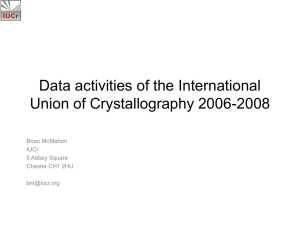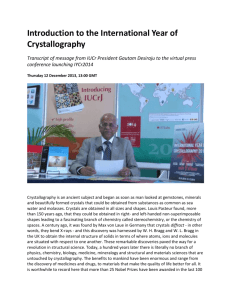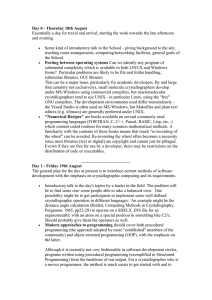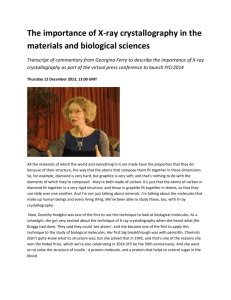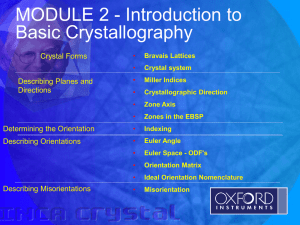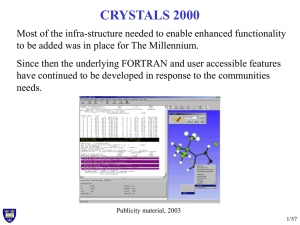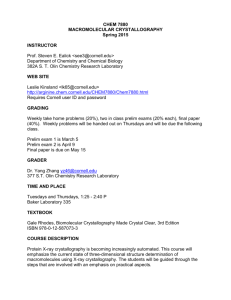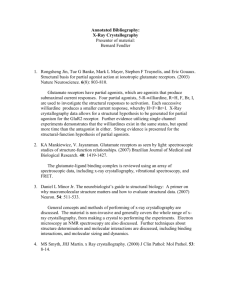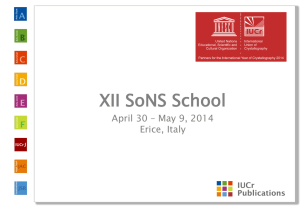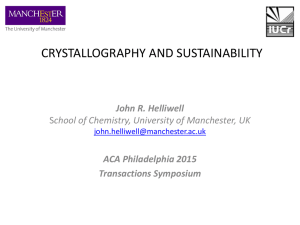preface International School on Mathematical and Theoretical
advertisement
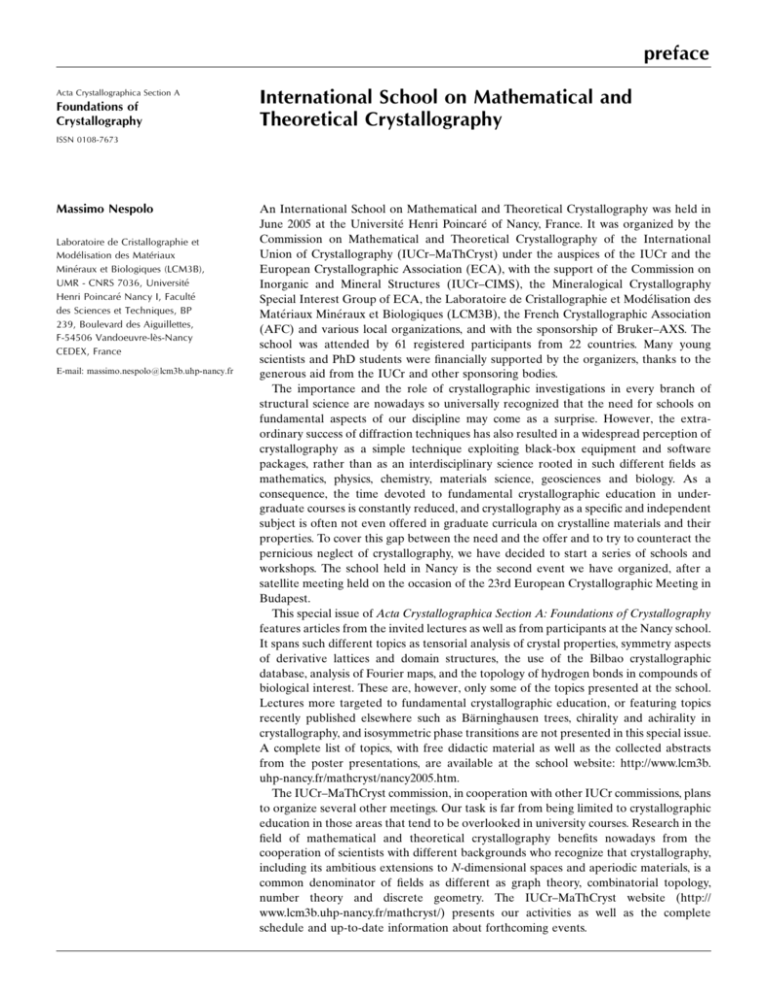
preface Acta Crystallographica Section A Foundations of Crystallography International School on Mathematical and Theoretical Crystallography ISSN 0108-7673 Massimo Nespolo Laboratoire de Cristallographie et Modélisation des Matériaux Minéraux et Biologiques (LCM3B), UMR - CNRS 7036, Université Henri Poincaré Nancy I, Faculté des Sciences et Techniques, BP 239, Boulevard des Aiguillettes, F-54506 Vandoeuvre-lès-Nancy CEDEX, France E-mail: massimo.nespolo@lcm3b.uhp-nancy.fr An International School on Mathematical and Theoretical Crystallography was held in June 2005 at the Université Henri Poincaré of Nancy, France. It was organized by the Commission on Mathematical and Theoretical Crystallography of the International Union of Crystallography (IUCr–MaThCryst) under the auspices of the IUCr and the European Crystallographic Association (ECA), with the support of the Commission on Inorganic and Mineral Structures (IUCr–CIMS), the Mineralogical Crystallography Special Interest Group of ECA, the Laboratoire de Cristallographie et Modélisation des Matériaux Minéraux et Biologiques (LCM3B), the French Crystallographic Association (AFC) and various local organizations, and with the sponsorship of Bruker–AXS. The school was attended by 61 registered participants from 22 countries. Many young scientists and PhD students were financially supported by the organizers, thanks to the generous aid from the IUCr and other sponsoring bodies. The importance and the role of crystallographic investigations in every branch of structural science are nowadays so universally recognized that the need for schools on fundamental aspects of our discipline may come as a surprise. However, the extraordinary success of diffraction techniques has also resulted in a widespread perception of crystallography as a simple technique exploiting black-box equipment and software packages, rather than as an interdisciplinary science rooted in such different fields as mathematics, physics, chemistry, materials science, geosciences and biology. As a consequence, the time devoted to fundamental crystallographic education in undergraduate courses is constantly reduced, and crystallography as a specific and independent subject is often not even offered in graduate curricula on crystalline materials and their properties. To cover this gap between the need and the offer and to try to counteract the pernicious neglect of crystallography, we have decided to start a series of schools and workshops. The school held in Nancy is the second event we have organized, after a satellite meeting held on the occasion of the 23rd European Crystallographic Meeting in Budapest. This special issue of Acta Crystallographica Section A: Foundations of Crystallography features articles from the invited lectures as well as from participants at the Nancy school. It spans such different topics as tensorial analysis of crystal properties, symmetry aspects of derivative lattices and domain structures, the use of the Bilbao crystallographic database, analysis of Fourier maps, and the topology of hydrogen bonds in compounds of biological interest. These are, however, only some of the topics presented at the school. Lectures more targeted to fundamental crystallographic education, or featuring topics recently published elsewhere such as Bärninghausen trees, chirality and achirality in crystallography, and isosymmetric phase transitions are not presented in this special issue. A complete list of topics, with free didactic material as well as the collected abstracts from the poster presentations, are available at the school website: http://www.lcm3b. uhp-nancy.fr/mathcryst/nancy2005.htm. The IUCr–MaThCryst commission, in cooperation with other IUCr commissions, plans to organize several other meetings. Our task is far from being limited to crystallographic education in those areas that tend to be overlooked in university courses. Research in the field of mathematical and theoretical crystallography benefits nowadays from the cooperation of scientists with different backgrounds who recognize that crystallography, including its ambitious extensions to N-dimensional spaces and aperiodic materials, is a common denominator of fields as different as graph theory, combinatorial topology, number theory and discrete geometry. The IUCr–MaThCryst website (http:// www.lcm3b.uhp-nancy.fr/mathcryst/) presents our activities as well as the complete schedule and up-to-date information about forthcoming events.
